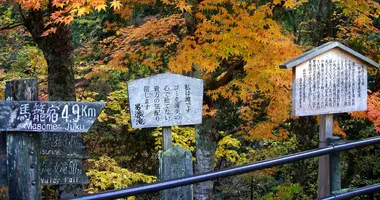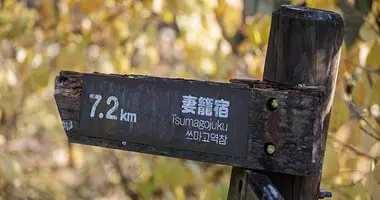Narai-juku: a beautifully preserved Edo period post town in Nagano
- Published on : 03/05/2024
- by : Japan Experience
- Youtube

Narai-juku is a historic post town located in the Kiso Valley of Nagano Prefecture, Japan. It was an important stop on the Nakasendo highway connecting Kyoto and Tokyo during the Edo period (1603-1868). Today, Narai-juku retains much of its original Edo-era architecture and atmosphere, making it a popular tourist destination for those interested in traditional Japan.
The history and importance of Narai-juku as a post town on the Nakasendo
During the Edo period, Narai-juku was the wealthiest of the 69 post towns along the Nakasendo. Located at the exact midpoint between Kyoto and Edo, it was sometimes called "Narai of a Thousand Houses" due to its prosperity and large number of inns and businesses catering to travelers. The town flourished as an important rest stop where feudal lords, merchants, and other travelers could find lodging, food, supplies, and entertainment on their long journey.
As one of the best-preserved post towns, Narai-juku offers visitors a glimpse into the lives of people during the Edo period and the experience of traveling the Nakasendo trail. The town's original layout, historical buildings, and local crafts and specialties paint a vivid picture of its illustrious past and role in facilitating travel and trade on this key route connecting Japan's cultural and political centers.
Exploring the beautifully preserved Edo-era architecture and townscape of Narai-juku
Strolling through the streets of Narai-juku feels like stepping back in time to the Edo period. The town has been designated an Important Preservation District for Groups of Historic Buildings, with many original structures from the 1600s and 1700s still intact. The main street stretches over 1 kilometer long, lined with wooden machiya houses that once served as inns, restaurants, shops, and homes.
Some of the notable architectural features include the projecting second stories and distinctive eaves of the buildings, as well as the traditional dark wooden facades and white-walled storehouses. Visitors can appreciate the atmospheric townscape with its stone-paved streets, old-fashioned signs, and lack of modern buildings that make it a truly immersive historical experience. Exploring the backstreets and alleys reveals hidden temples, shrines, and gardens that further add to Narai-juku's charm and authenticity.
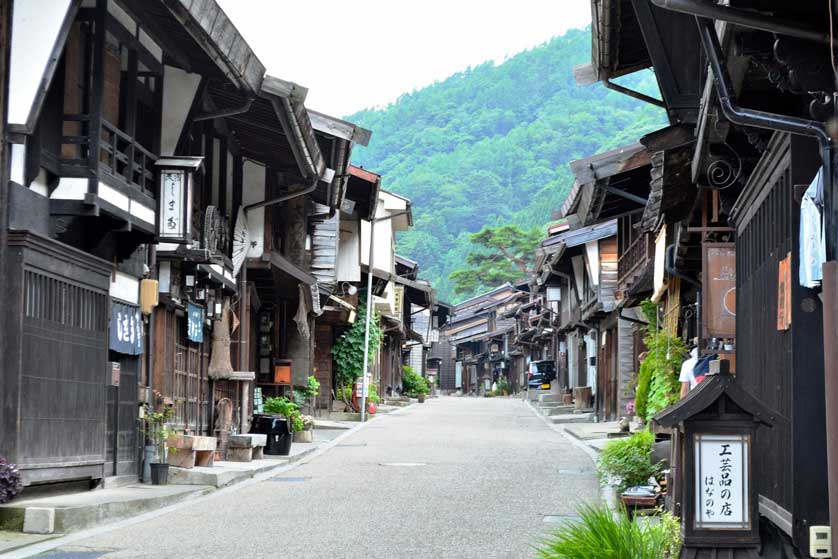
Narai-juku on the Nakasendo, Nagano Prefecture
Key historic sites and attractions to visit in Narai-juku
Narai-juku is home to several well-preserved historical buildings that are open to the public as museums or cultural heritage sites. Some of the key attractions include:
- The Nakamura Residence - an Edo-period merchant house with displays of traditional architecture and artifacts showcasing the lifestyle of wealthy residents
- Kamidonya Shiryokan museum - a wooden house formerly belonging to a high-ranking Shinto priest with exhibits about the town's history and culture
- Kiso Ohashi bridge - a modern wooden bridge built in the traditional style that crosses the Narai River and offers views of the surrounding nature
- Narai-juku's original notice board - an Edo-period bulletin board with posted official notices and regulations from the time
Visiting these sites allows you to get an up-close look at preserved buildings, interiors, and objects while learning more about Narai-juku's history. You can imagine yourself as a traveler from long ago resting at an inn, purchasing supplies at a shop, or admiring the view from the bridge.
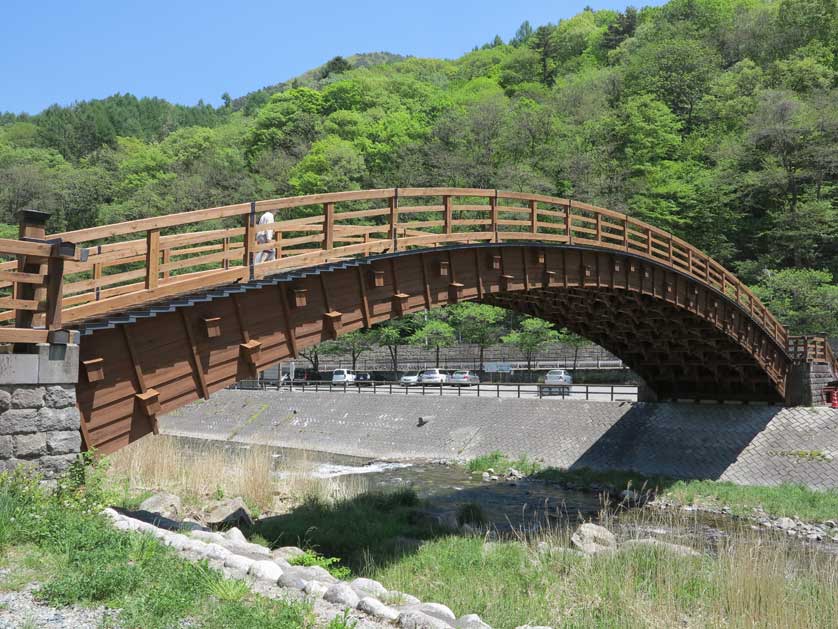
Kiso Ohashi, Narai-juku, Nagano Prefecture
Local specialties, crafts and souvenirs of Narai-juku and the Kiso Valley
Narai-juku and the surrounding Kiso Valley are known for their high-quality traditional crafts that make excellent souvenirs and gifts. Some of the most famous include:
- Lacquerware - expertly crafted wooden bowls, trays, and boxes coated with layers of lacquer in a tradition dating back centuries
- Woodcrafts - including intricately carved combs and other implements made from prized local timbers like cypress and chestnut
- Local sake and foods - like the regionally produced Nanawarai sake brand or gohei mochi rice cakes grilled on a stick with miso
Visiting the shops and studios in Narai-juku and nearby Kiso Fukushima lets you see artisans at work, learn about the materials and techniques used to make these crafts, and find unique items to bring home. Picking up some locally made goods is a great way to support the community and preserve these Japanese craft traditions.
Hiking options around Narai-juku to experience the Nakasendo trail
Narai-juku makes an excellent base for exploring the scenic Kiso Valley and hiking sections of the historic Nakasendo trail. One of the most popular nearby routes is the Torii Pass hike connecting Narai to the neighboring post town of Yabuhara.
The hike covers 6 kilometers one-way and takes around 3 hours at a leisurely pace through forests and countryside. Highlights include walking on the original ishidatami stone paving of the Nakasendo, seeing old stone markers and the ruins of former rest stops, and reaching the Torii Pass lookout with its vermilion shrine gate and expansive views of the valley. Along the way you'll gain a deeper appreciation for the nature, scenery, and challenging terrain that travelers of the past had to traverse.
For a more immersive experience, you can combine a visit to Narai-juku with a longer multi-day hike on the Nakasendo trail, walking from post town to post town and staying at small inns in the traditional villages along the route. Undertaking part of this journey on foot is the best way to get a real sense of the distance and how people traveled between Kyoto and Tokyo long ago.
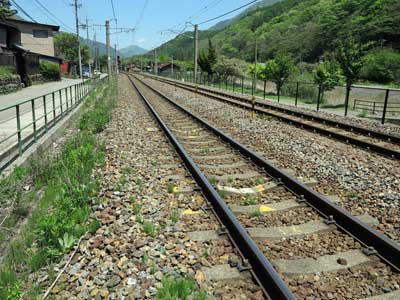
Where to stay in Narai-juku for an authentic experience
To fully soak up the timeless atmosphere of Narai-juku, consider staying overnight at one of the traditional inns in historic buildings. Formerly merchants' residences or travelers' lodgings, many have been painstakingly preserved and converted into authentic accommodations.
Staying at a small family-run minshuku or a classic ryokan allows you to sleep on comfortable futons in tatami-mat rooms, experience old-fashioned hospitality, and feel the history of the Edo period come to life. Some inns also have tranquil gardens, onsen baths, and local cuisine featuring regional ingredients to complete your immersion into the culture of the Kiso Valley.
Waking up in the morning to the sound of the town slowly coming to life, walking the quiet streets after the day-trippers have gone, and spending time in a centuries-old house offers an unforgettable taste of Old Japan that you can't get at a typical modern hotel.
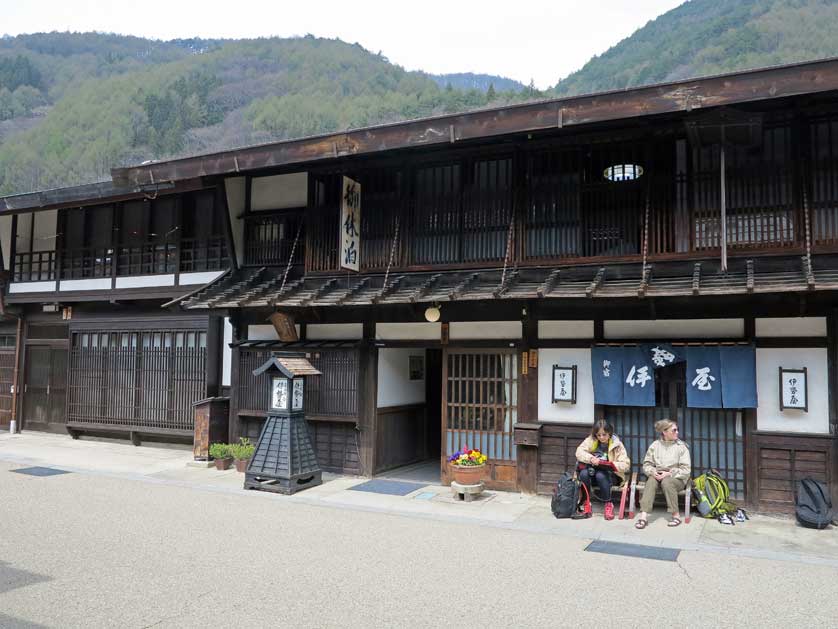
Combining a visit to Narai-juku with other historic post towns nearby
Narai-juku is just one of several beautifully preserved post towns in the Kiso Valley. To make the most of your trip, it's well worth visiting some of the others nearby like Magome and Tsumago. Each has its own unique character, architecture, and attractions that tell the story of the Nakasendo.
Magome is known for its picturesque setting on a slope, historic watermill, and panoramic views over the valley. Tsumago has been restored to look almost exactly like it did during the Edo period, with no visible power lines or modern buildings. Strolling through the towns, you can compare their different atmospheres and better understand what life was like along the route.
Also highly recommended is hiking the 8km trail that directly connects Magome and Tsumago through forests and countryside. Walking this well-maintained section of the original Nakasendo offers the classic experience of traveling from one post town to another by foot, just like people did hundreds of years ago. The trail can be comfortably completed in 2-3 hours and is a favorite among travelers and history buffs.
Access and transport options for getting to Narai-juku
Narai-juku is conveniently located on the JR Chuo Main Line, making it directly accessible by train from Nagoya, Matsumoto, and Nakatsugawa.
From Tokyo, the fastest route is to take the JR Tokaido Shinkansen to Nagoya (100 minutes) and then transfer to the Limited Express Shinano bound for Nagano, getting off at Narai Station (120 minutes). With a Japan Rail Pass, you can do this trip for free.
Alternatively, take the JR Azusa or Super Azusa Limited Express direct from Shinjuku to Shiojiri (3 hours) and change to a local train to Narai (20 minutes). This route is covered by the JR East Pass.
Direct buses also run from Osaka, Kyoto, and Nagoya to Narai-juku, which can be convenient for those coming by highway.
Once in Narai, the town is very compact and walkable, with all sights and attractions within easy reach on foot. The train station is right at the north end of the historic district. If you're staying overnight, most inns are happy to pick you up by car. Consider making Narai-juku your gateway to discover the beautiful Kiso Valley and walk in the footsteps of Edo period travelers along the Nakasendo trail.



